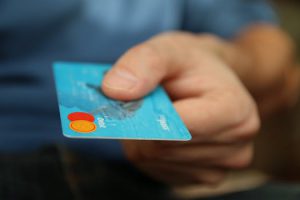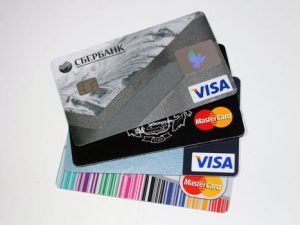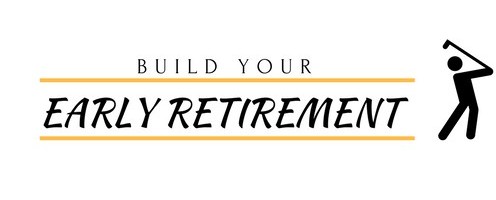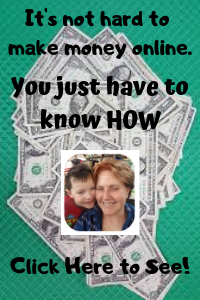 Here at Build Your Early Retirement I’ve written a lot about how to build an online business in order to help you become financially independent and retire early. But earning more money is only half of your financial situation. The other side of the coin is your expenses and your debt. Too much of either one can derail any retirement plan!
Here at Build Your Early Retirement I’ve written a lot about how to build an online business in order to help you become financially independent and retire early. But earning more money is only half of your financial situation. The other side of the coin is your expenses and your debt. Too much of either one can derail any retirement plan!
If you’re like millions of other people out there, your debt may be affecting your financial goals. If you’re having trouble managing it and need to know how to consolidate your debt, there are great options available to help.
My Story
Years ago after a difficult divorce, I was a single mom making a modest income working full time and raising my two daughters. Feeling like I didn’t want the quality of my children’s lives to change because of decisions I made, I started pulling out my credit cards little bit by little bit. Unfortunately, after a couple of years, those “little” purchases had totaled a 5 figure balance that I was having difficulty paying each month!
Then one day an innocent comment from my 13 year old daughter woke me up to the changes I needed to make. She asked me to buy something at the store, and when I told her that it was too expensive, she said, “But it’s only $20″. Those four words blew me away as I thought, “She has no idea how hard I work for that $20!”
I realized then that I had been totally wrong in worrying that I should keep a certain standard of living for my girls. What I should have been showing them was that when life gets tough, you pull yourself up by the bootstraps and make good financial decisions!
That night I looked around our house and saw all the material things that I had paid for with a credit card–toys they didn’t need (or play with anymore!), expensive clothes, video games and more. I had been handling my guilt with credit cards, and if I didn’t change my priorities, I would never become financially stable and my girls would follow in my footsteps!
 From then on my goal was to become debt free as quickly as possible. Instead of Saturday trips to the mall, we went to flea markets and garage sales. It became a game to see how inexpensive we could find things we needed. I refused to use a credit card, and breakfast-for-dinner was common in order to keep the grocery bill as low as possible.
From then on my goal was to become debt free as quickly as possible. Instead of Saturday trips to the mall, we went to flea markets and garage sales. It became a game to see how inexpensive we could find things we needed. I refused to use a credit card, and breakfast-for-dinner was common in order to keep the grocery bill as low as possible.
It took me over 3 years to pay off my debt. It was extremely lucky that my job was stable and we didn’t have any major expenses during that time, like medical bills. But the most satisfying thing for me came one day when I heard my youngest daughter ask my then 16 year old if she was going to buy something they were looking at online. She had gotten a part-time job and was trying to save up for her first car. Her reply? “No! It’s too expensive, it’s $20!” That’s my girl!
==>==> Find a solution to your debt issues today <==<==
Good Debt and Bad Debt–Knowing the Difference
But is all debt bad? The absolute perfect financial situation is one where you have $0 in debt of any kind whatsoever. But for most people that isn’t realistic. I don’t believe all debt is bad in your financial plan, and I classify it into 3 basic categories:
 Good Debt–Debt for normally appreciating physical assets. Real estate is a good example, such as your home or rental property. The vast majority of people cannot afford to save up enough to buy a house outright with cash. But if it makes sense for you to purchase a home due to high rents or the needs of your family, then you should have no qualms about getting a mortgage. Beware of factors such as how much of a down payment you have, what type of neighborhood it’s in, how much you pay relative to your income, how much you pay relative to the value of the house, and many more that will also determine whether your mortgage qualifies as good debt.
Good Debt–Debt for normally appreciating physical assets. Real estate is a good example, such as your home or rental property. The vast majority of people cannot afford to save up enough to buy a house outright with cash. But if it makes sense for you to purchase a home due to high rents or the needs of your family, then you should have no qualms about getting a mortgage. Beware of factors such as how much of a down payment you have, what type of neighborhood it’s in, how much you pay relative to your income, how much you pay relative to the value of the house, and many more that will also determine whether your mortgage qualifies as good debt.- OK Debt–Debt for depreciating physical assets. Ideally you want to pay cash for any asset that will depreciate over time, such as a car. But it’s not realistic for many people when a car is a necessity. However, you can minimize the debt you take on by buying smart. If you purchase a brand new car, it wouldn’t be unusual to pay $35,000 or more. Yet that car can depreciate by $5,000 or more every year for the first few years! But if you were to look for the same vehicle with low miles when it’s 4-5 years old, you could possibly find it as low as $15,000–is that new car smell really worth that much extra money?

- Bad Debt–Unsecured debt. This is debt that has no collateral, such as credit cards or personal loans. Because there is no asset securing the debt, the interest rates are higher–extremely higher many times. If at all possible, you don’t want to have any unsecured debt. A debt consolidation loan falls into this category, but paying off other high interest debt with a consolidation loan may make sense.
==>==> See my #1 Recommendation to help you settle your debt <==<==
How Much Debt is Too Much?
If you ask five different people, “How much debt is too much?”, you’re probably going to get five different answers. A lot of times you hear it expressed as how much debt you have in relation to your income. This is called the Debt-To-Income Ratio, or DTI, and is calculated by dividing the amount you owe per month on your debt by your monthly gross income. Gross income is the amount of money you make before any deductions are taken out.
For example, if your gross income per month is $6,000 and all of your debt payments total $2,000, the calculation would be: 2,000÷6,000=33.33. Your DTI ratio is 33.33%.
 Banks and mortgage companies all use your DTI as a factor in approving a loan application, but the percentage that’s acceptable can vary greatly. Some companies will allow a DTI as high as 36%, while a lot of them use 28%. If you go to a financial planner, many of them will advise you that your DTI shouldn’t be any higher than 20-25%.
Banks and mortgage companies all use your DTI as a factor in approving a loan application, but the percentage that’s acceptable can vary greatly. Some companies will allow a DTI as high as 36%, while a lot of them use 28%. If you go to a financial planner, many of them will advise you that your DTI shouldn’t be any higher than 20-25%.
All of those percentages are good guides, but my personal opinion of how much debt you can handle is more specific to someone’s individual situation. This is the method I use to determine how much debt we can comfortably carry and be financially stable:
- Take your gross monthly income and subtract all taxes, Social Security, and Medicare
- Subtract your 401k contribution, making sure that your contribution combined with your company match is at least 15%
- If you have no access to a 401k, subtract 15% of your gross monthly income for retirement
- Subtract your mortgage payment or rent
- Subtract all loan payments for all debt
- Subtract insurance payments and medical premiums
- Subtract all your monthly bills–utility bills, cable, phone, gas for your car, etc., and subtract them
- Subtract all of your miscellaneous items, like school lunches and clothing–I estimate what it costs on average a month
- Now look at your final number, and if there isn’t at least 10% left of your monthly income to save for emergencies and unexpected expenses, you have too much debt.
This may seem too strict for some, but we’re not talking about just getting by month to month. We’re talking about actually being financially stable, able to retire when we want or need to, and prepared for the unexpected twists that life always wants to throw at us!
==>==> More than $10,000 in debt? Let CuraDebt help you with the answer! <==<==
Get a Plan and Pay Off the Debt
If you’ve determined that you have more debt than you are comfortable with, the sooner you get a plan of action, the better. The first step in that plan is to see where your money is being spent, right down to the last dime. Create a money journal or some way to document where all of your money is being spent.
 Once you’ve documented in your journal for a couple of months, you’ll probably be surprised at where some of your money is going. When I was creating my plan to get out of debt years ago, one thing that I found was how much money I was spending on convenience meals and packaged foods. I forced myself to plan home cooked meals around the sales at the grocery store and dug out my slow cooker so I could stop ordering out on late nights. It was amazing how much money I saved and how much better we were eating!
Once you’ve documented in your journal for a couple of months, you’ll probably be surprised at where some of your money is going. When I was creating my plan to get out of debt years ago, one thing that I found was how much money I was spending on convenience meals and packaged foods. I forced myself to plan home cooked meals around the sales at the grocery store and dug out my slow cooker so I could stop ordering out on late nights. It was amazing how much money I saved and how much better we were eating!
Your journal should also show you how much you’re spending on each aspect of your debt. Do you have a credit card with an extremely high interest rate? Plan to pay it off first and make minimum payments on the rest. Another plan may be to transfer all of your credit card balances to one card that has the lowest interest rate.
Do you have a lot of money going to cable TV and cell phone bills? Downgrade your plans or look for providers with lower rates, then put the savings toward paying down your debt.
Analyze where your money is going and ask yourself how many sacrifices you’re willing to make to become financially stable. When you make a plan that puts debt reduction as a top priority, your retirement goals and financial security will get a big boost!
==>==> Stop Struggling and Get the Help You Need — Call Now: 866-329-8809 <==<==
Debt Management and Credit Repair–Get the Help You Need
Sometimes you find yourself in a situation where the debt can be overwhelming, and many people have found themselves in this position. When that happens, finding a company that specializes in debt management to help you may be the best option.
management to help you may be the best option.
These companies, such as CuraDebt, have experts that know how to set up a plan and work with your creditors. They can help you settle your debt, lower your payments, help you settle debt disputes, offer free credit counseling, and much, much more.
If your debt is overwhelming, don’t struggle alone–ask for the help you need, it’s just a mouse click or phone call away!
Don’t Let Too Much Debt Sabotage Your Financial Stability!
Building financial security and reaching your goal of retiring when you want to is more than just making more money. It takes more effort to make another dollar than it does to save a dollar you’ve already made!
But if you learn how to consolidate your debt and combine it with creating an online business, there’s no limit to how far you can go in achieving your financial goals!
Janelle





I’m glad you pointed out how terrible credit card debt really is. I went through this with my wife who had both student loan debt and credit card debt before we got married. The student loan APR was about 8% but the credit card debt was 29% APR! We had to tackle the credit card debt first since that is a killer! You can never recover from that rate unless you get rid of it as soon as you can!
You are exactly right! Credit card debt is a snowball rolling downhill getting bigger and bigger and can get out of control faster than someone realizes. Getting it back under control is hard and sometimes you need help. There are times when using the services of company like CuraDebt can help get you out of debt faster and get your credit rating repaired faster than struggling for a long time.
I think a lot of people get caught up in thinking all debt is the same. I am glad that you pointed out the differences in types of debt. I can say that I have debt, but the only debt I have is my house and that is not a bad debt to have. It would be entirely different if I said I had $25,000 in credit card debt and $5,000 in collection debt. I really like how you mentioned the formula for the DTI, very helpful.
You’re doing great! I’m glad you liked the article, and thank you for taking the time to comment!
Isn’t it amazing how kids attitudes change when our attitudes change. That moment when your daughter changed her thought patterns about “just $20” to it being expensive must have been such a moment of triumph for you. I know exactly what you mean about trying to make sure your kids have everything they need and also making sure that they have the right attitude towards things. It is so not easy!
I have been in huge amounts of debt before and it is not easy to get out of it. It is only when you make the decision to stop using credit and make a way to make ends meet that things start changing.
I also do that now, try to find the cheapest possible way to fund our living expenses.
Thank you for a lovely article.
You are exactly right about my moment of triumph! I had been so worried that my irresponsibility with money would be an example that my girls would follow. Once I realized what was truly important to teach them, the sacrifices didn’t seem so large, and they embraced my goal of being debt free as much as I did!